The best gifts are usually those that you don't expect. A few weeks ago, everybody was watching the numerous sunspot groups on the earth-facing solar hemisphere. Very few would have noticed the faint activity in SDO's and PROBA2's extreme ultraviolet (EUV) imagery beyond the Sun's northeast limb, starting around Christmas Eve. However, in EUV imagery from Solar Orbiter (SolO) and STEREO-A, that eruption revealed to be far more interesting. Those two spacecraft were trailing Earth by respectively 9 and 35 degrees, and so had a better view on the Sun's farside. The image underneath shows the positions of Earth, Solar Orbiter (pink dot), STEREO-A (A), and the Parker Solar Probe (PSP) on 25 December 2021 (00:00UT).
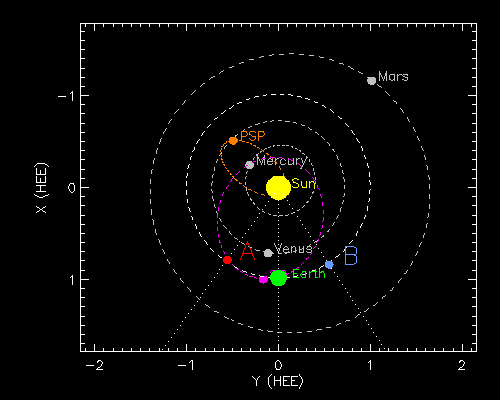
So, what did the EUV imagers on board of these satellites actually see? Underneath a comparison ordered according to the best view on the Sun's farside. On the left we have STEREO-A/EUVI 304, in the middle the view by SolO/EUI/FSI 304 (with coordinate grid overlaid), and on the right the SDO/AIA 304 or (annotated) 171 image. The wavelength of 30.4 nm allows the imaging of the solar corona at temperatures around 80.000 degrees, at 17.1 nm this temperature is already around 700.000 degrees. The top row shows the view between 20:55-21:00UT, the lower images around 21:45-21:50UT. These timings coincide with what was best visible of this eruption in the AIA imagery (with annotated AIA 171 images identifying the erupting structure). These images show there was a sizeable eruption on the Sun's farside, with a more revealing view by those spacecraft which were more trailing the Earth (STEREO-A, SolO) and with a wider field of view (SolO).


The real fun started after 22UT, and was only visible in Solar Orbiter's FSI imagery. Indeed, the Atmospheric Imaging Assembly (AIA) of the Solar Dynamics Observatory (SDO) is designed to provide EUV images that span about 1.3 solar diameters, while the EUVI instrument on board of STEREO-A provides images which have a circular full sun field of view (FOV) covering about 1.7 solar diameters. However, SolO's EUI Full Sun Imager (FSI) has a field of view that corresponds to 7.15 solar diameters at the average Sun-Earth distance (about 150 million km), and still 2 solar diameters at perihelion (point closest to the Sun in SolO's orbit). Hence, this FOV is unprecedentedly large for a coronal EUV imager (Rochus et al. 2020), and allows for tracking eruptions such as the one on 24-25 December to a much further distance from the Sun than previously possible.
The clip underneath as well as the two screenshots showing the eruption on 25 December at 00:36UT and 02:08UT, capture the evolution from a dense complex structure close to the Sun at 21:50UT (see above) to a slowly thinning and simplifying plasma ribbon hovering in space at a plane-of-the-sky (projected) distance of at least 700.000 km from the Sun (twice the Earth-Moon distance) around 00:36UT. This ribbon had a plane-of-the-sky length of at least 1.1 million km (about 3 times the Earth-Moon distance) at that time.

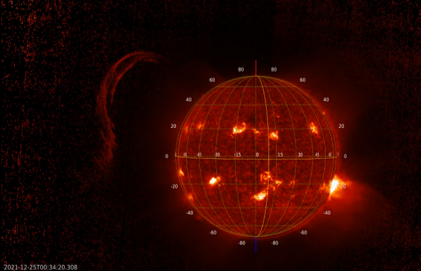
Further dissolving, shortening, and slowly moving away from the Sun, the ribbon could be tracked to more than 1 million km from the solar surface (again plane-of-the-sky) up to around 03UT on 25 December. From triangulation, the position of the eruption was approximately East 137 degrees North 39 degrees, which means that the event was on the farside for all 3 spacecraft, i.e. STEREO-A, SolO, and SDO (Earth: 47 degrees behind the east solar limb).
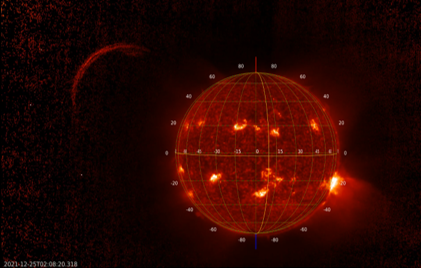
A slow-moving coronal mass ejection (CME) from this eruption was already well in progress as tracked by the SOHO/LASCO C2 and STEREO-A/COR2 coronagraphs from around 22UT on 24 December onwards, with plane-of-the-sky speeds of respectively 100-200 and 200-300 km/s. This difference is most likely attributable to the difference in vantage points between the 2 spacecraft, about 35 degrees.
Though SOHO and SolO were not observing from the same location, the separation is small enough to try and put the LASCO white-light coronagraphic pictures over the FSI EUV images. The imagery is made a bit noisy to allow tracking the ribbon simultaneously in EUV and white light in the overlap region, i.e. the coronagraphic imagery was made a bit transparent. Amazingly, by doing so, the obtained images seem to suggest that the plasma ribbon visible in EUV (FSI) also appeared in the white-light coronagraphic images from LASCO as can be seen in the annotated compilation underneath. There's a small time delay between the two, most likely due to the different perspective (about 9 degrees) or because a different part of the same structure is being imaged. The denoised version at the end of this news item shows this even more clearly. Nonetheless, this offers a great opportunity to find out more on the kinematics, true structure, and composition of this feature as it further moved away from the Sun. Also, the position of the eruption (E137 N39) seems to suggest that the associated CME went in the direction of PSP, which offers another great science opportunity, this time to match the observed CME and maybe even the plasma ribbon to in-situ solar wind measurements by PSP. It looks like this Christmas eruption is going to result in some highly interesting science papers and conference talks for many scientists. We'll keep you posted of the results!
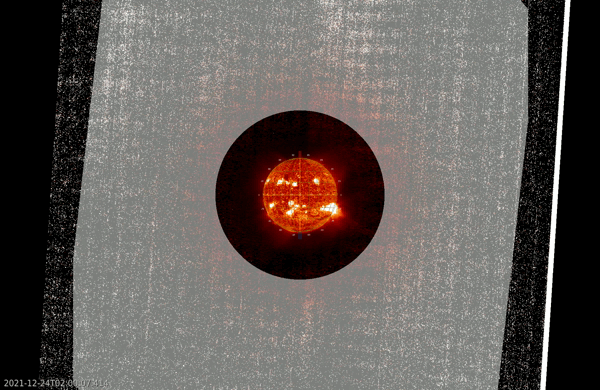
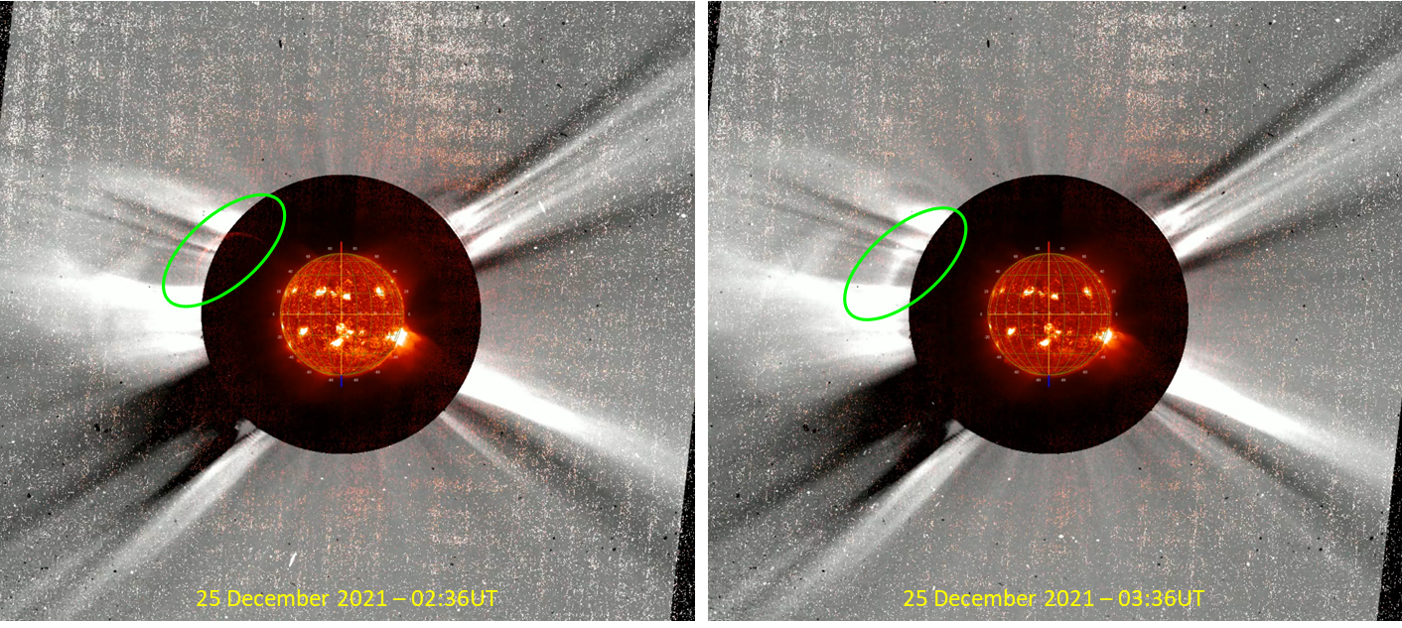
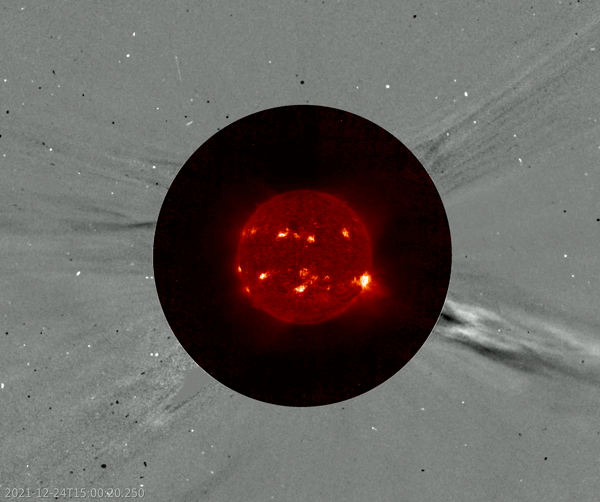
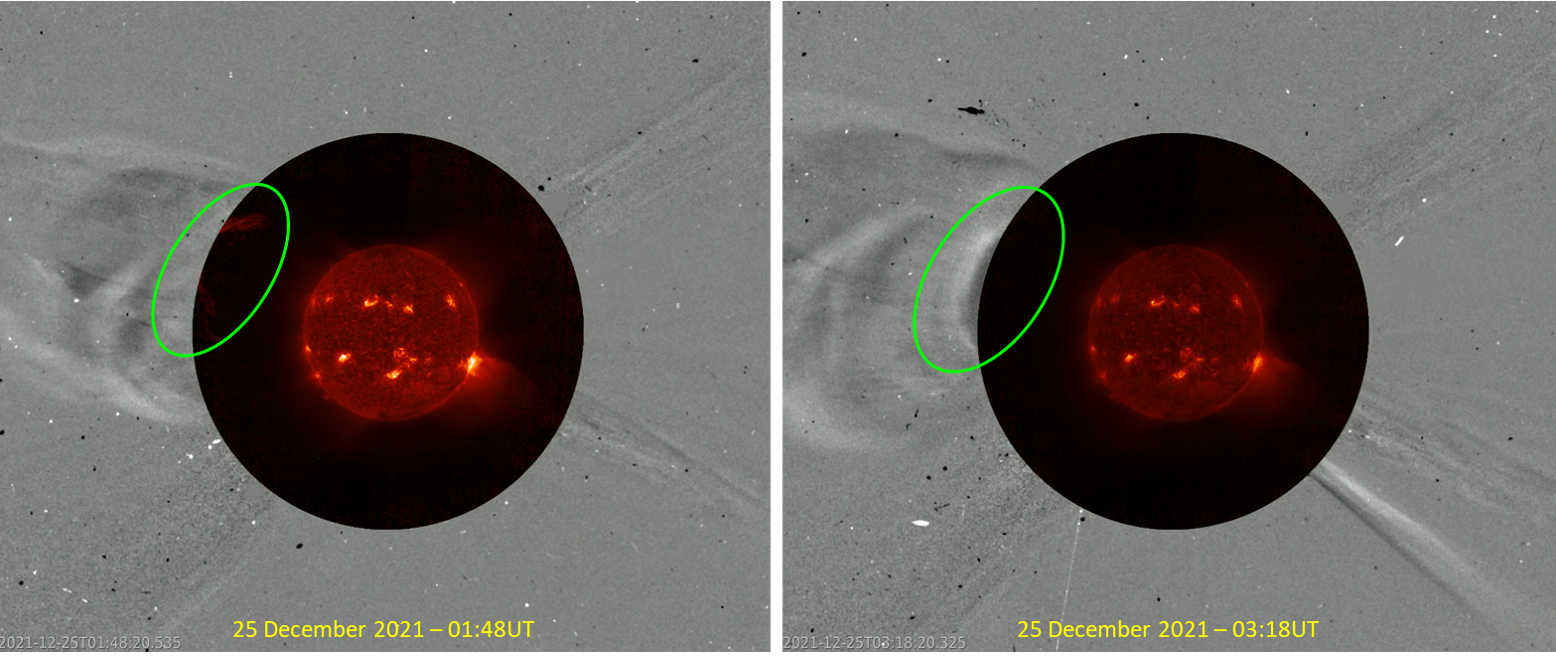
Credits movies and contributions: the SolO/EUI team and JHelioviewer.





